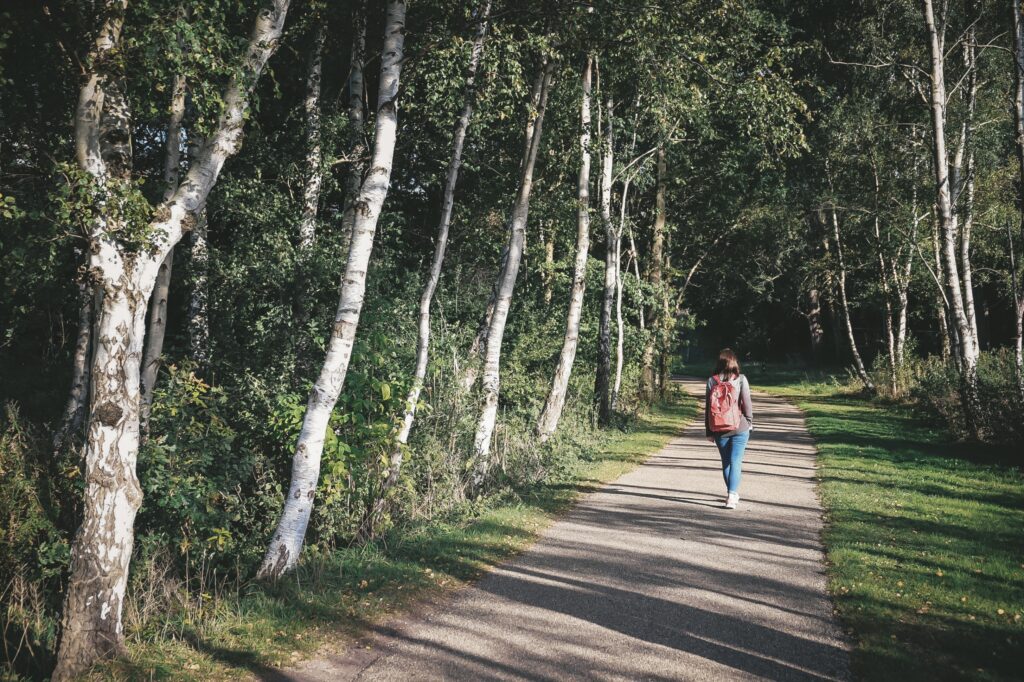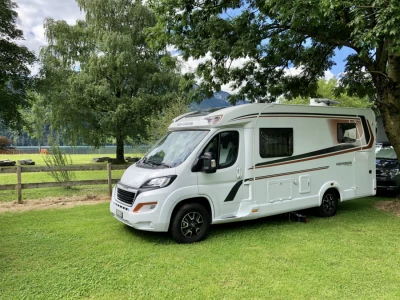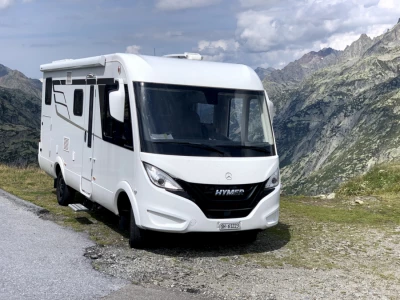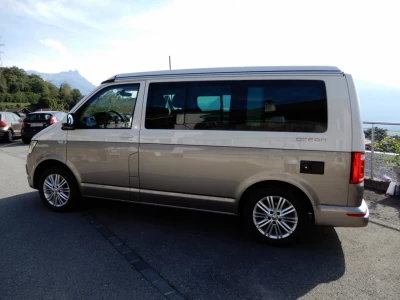Camping in Denmark with a motorhome
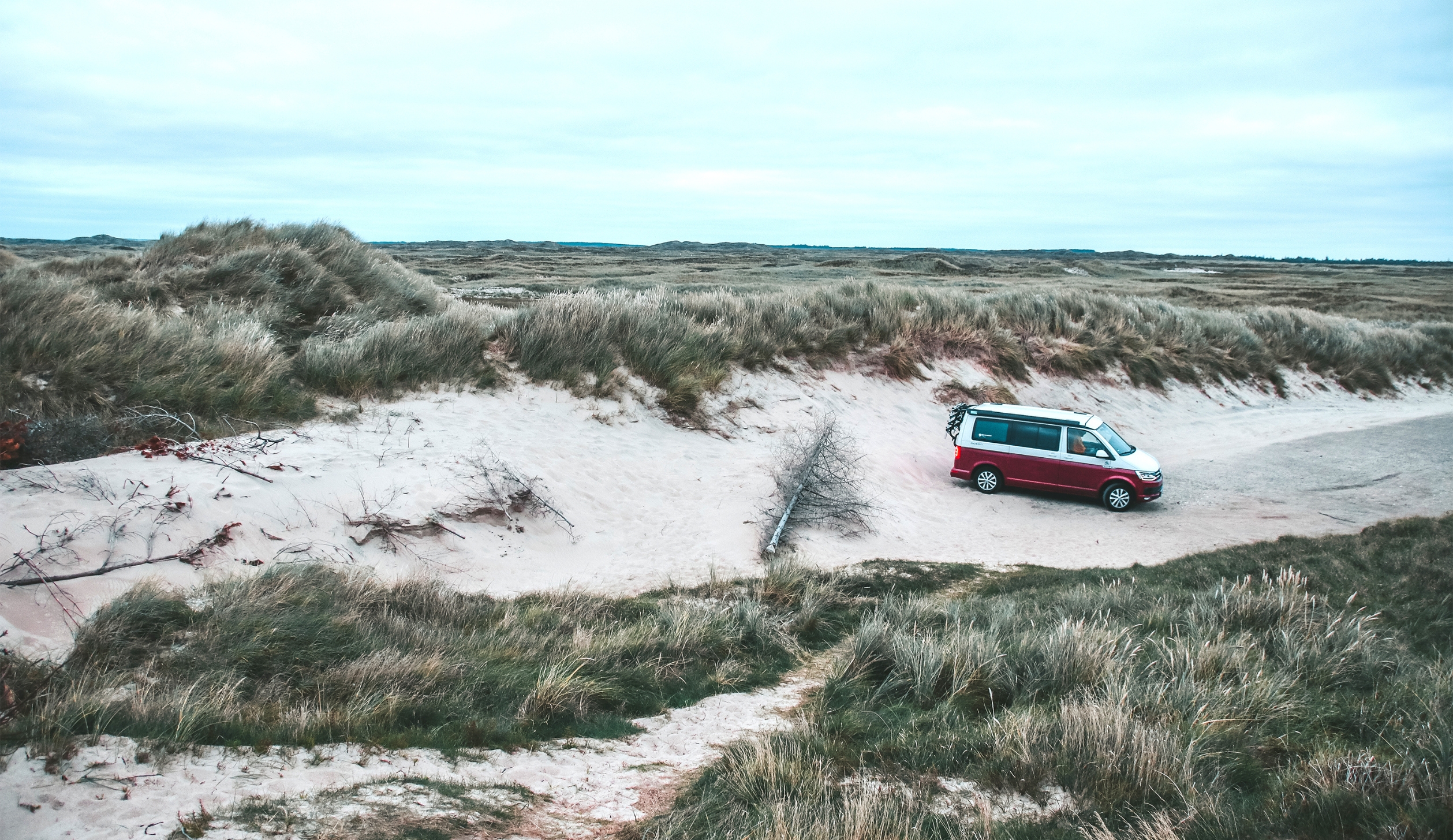
Let’s set off on an unforgettable motorhome road trip through Denmark! In this article, I’ll take you on a fascinating journey along picturesque coastal roads, historical sights, kilometers of beaches and idyllic landscapes. Find out how best to plan your route, which campsites are recommended and which exciting places await you along the way. Here you will find my tips for a successful trip, from the preparations to all the useful information on site. Experience a round trip through Denmark and be inspired by the diversity and beauty of this country.
1. Why Denmark is such a great camping country
Picturesque Denmark has long since established itself as one of Europe’s favorite camping destinations. The combination of breathtaking landscapes, modern facilities, warm hospitality and diverse leisure activities make the country an ideal place for your motorhome adventure.
Diverse natural beauty
The first reason is Denmark’s remarkable variety of natural spectacles. From the white sandy beaches along the North Sea coast to the rolling hills and forests of Jutland and the rocky shores of Bornholm, there is something for all outdoor enthusiasts to discover. The Danish countryside offers countless opportunities for hiking, cycling and exploring, so you can always be surrounded by impressive wilderness.
Excellent camping infrastructure
The first-class camping infrastructure in Denmark should also be emphasised. Modern campsites offer a wide range of services, including clean sanitary facilities, electricity connections, Wi-Fi and often even restaurants and supermarkets on site. Many campsites have now developed environmentally conscious concepts and are focussing on a sustainable camping lifestyle. For you, this not only means a pleasant and comfortable stay surrounded by nature, but also the opportunity to give something back to nature.
Hospitable atmosphere
The Danish people are also known for their warm hospitality – and this is also reflected on the campsites. The friendly atmosphere creates a sense of community among travellers and activities and events are often offered to encourage togetherness. Meeting the locals gives you an authentic insight into the Danish way of life and culture.
Varied leisure opportunities
Whether you are interested in culture, outdoor adventures or families with children, Denmark offers a wide range of leisure activities. Famous cities such as Copenhagen, Aarhus and Aalborg invite you to explore, while nature reserves, beach resorts, museums and amusement parks provide contrasting excursion options.
Water sports enthusiasts can let off steam on the coasts with a surfboard, kite or SUP, while the picturesque beaches and dunes offer a true paradise for relaxing afternoons. Last but not least, Denmark is known for its diverse culture. Here you can discover historic castles, art exhibitions, street art and local markets.
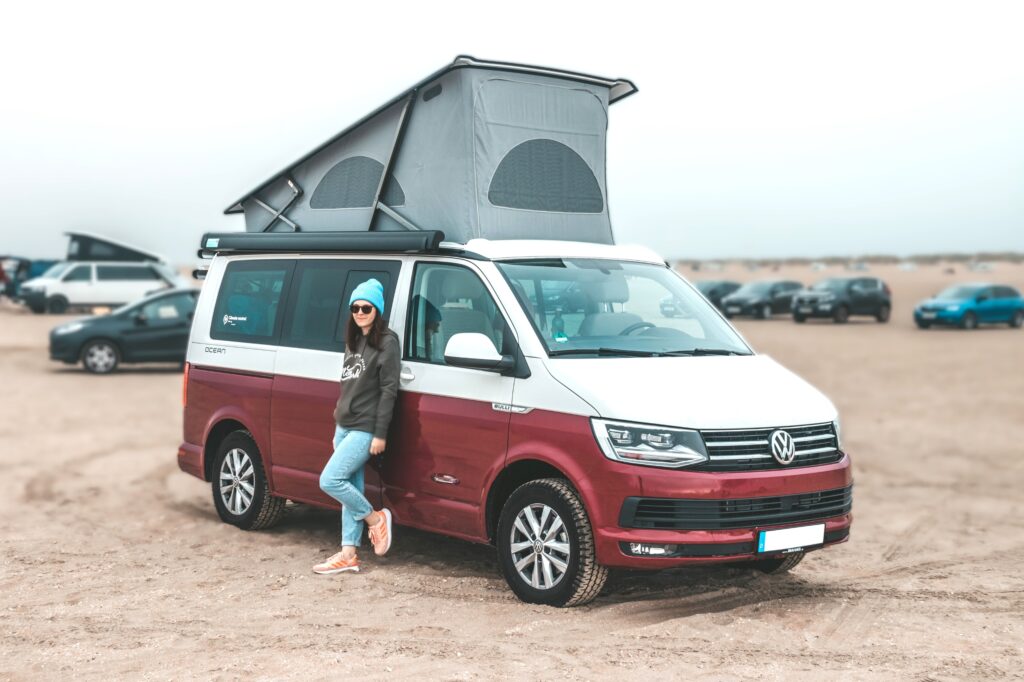
2. The most important tips for your trip through Denmark
Travelling through Denmark promises unforgettable adventures. Be it along the picturesque coastline or in the historic cities – the country’s rich culture can be felt everywhere. To help you plan your trip and enjoy it to the full, I’ve put together the most important tips for an unforgettable trip.
Weather appropriate clothing and equipment
Denmark’s weather is often changeable, even in summer. So pack clothes to be prepared for all weather conditions. A rain jacket, comfortable hiking boots and sun protection are essential. Equally important is a good mosquito repellent, especially if you are camping or hiking in rural areas.
Early reservations
Denmark has become an increasingly popular holiday destination in recent years, which means that the most popular campsites, accommodation and attractions can be fully booked. To avoid disappointment, plan ahead and book accommodation and pitches for your motorhome from home if possible. This is especially true for a campervan if you don’t have your own. Especially during the peak holiday season in the summer months, these can be fully booked if you start looking a few weeks in advance
What does “hygge” actually mean?
The Danish “hygge” way of life emphasises cosiness and enjoying the simple things. Embrace it by visiting the local restaurants and markets to sample the delicious Danish cuisine and experience the relaxed atmosphere. A cup of coffee or tea in a cosy café is just as hygge as a delicious cinnamon bun on a foggy day at the beach or a dip in the icy waters. Just take the moment as it is and turn it into your own personal everyday happiness!
Use cycle-friendly routes
Denmark is a true cycling paradise with well-developed cycle paths and a friendly attitude towards cyclists. Hire a bike or bring your own to explore the countryside in an environmentally friendly way. The flat roads and scenic routes make cycling bliss perfect and a real alternative for travellers to get from A to B and leave the motorhome at the campsite for once.
A real plus for nature and the environment
Denmark attaches great importance to environmental protection and sustainability. Waste is separated, electricity is produced in an environmentally friendly way and there are modern concepts for the careful use of natural resources. Again and again you will find information boards on how to respect nature and protect endangered animal and plant species on hikes and how to implement the local rules for camping and outdoor activities most easily. In this way, you will also contribute to preserving Denmark’s beauty for future generations while travelling.
Smørrebrød (Sandwiches)
While travelling through Denmark, you should definitely try the typical Danish smørrebrød. This classic is a variation on a simple sandwich, so to speak, which in Denmark is topped with an abundance of fresh ingredients: from smoked salmon and pickled herring to great vegetarian options. Visit local restaurants or cafés and choose from a wide range of toppings. You’re sure to find a smørrebrød to suit your taste.

3. Motorhome or tent?
While camping allows you to experience the charm of sleeping outdoors and direct contact with nature, a motorhome offers you more convenience and comfort for your trip to Denmark, especially if you want to explore different places. Your choice depends on how you prefer to spend your road trip. To help you decide, I have summarised the advantages of each.
Camping gives you a closer connection to nature and an outdoor experience that could hardly be wilder. You have the choice of where to set up your home and can enjoy the day surrounded by breathtaking landscapes. Incidentally, you can also save money on campsites, as a pitch in a tent area is usually cheaper than a motorhome pitch.
If, on the other hand, you are travelling in a motorhome, the cosy four walls and a comfortable bed are the unbeatable advantages. You have your own mobile home with you and your journey is almost independent of the weather. If it rains, you always have the option of staying indoors until the weather is favourable for your next trip. The storage space of a motorhome is also a clear plus.
By the way: If you don’t want to decide and would like to try out both types of camping, it is often possible to hire outdoor equipment such as a tent and sleeping bag for a few days. This gives you a combination of motorhome and tent travel.

Explore Denmark by motorhome and enjoy the beautiful spots in the middle of nature. Copyright: Marielle Janotta
4. When is the best time to travel?
If you’re thinking about taking a motorhome road trip to Denmark, it’s important to choose the right time of year to make the most of your trip.
For sunny weather, lively cities and a great swimming experience on the Danish beaches, the period from June to August is ideal. The temperatures are pleasant to summery, the days are longer and you can enjoy Danish culture and nature to the full. However, you should be aware that it can be crowded in some places during the high season.
If you like it quieter and more budget-friendly, you should consider spring or autumn. April to mid-June and September to October offer mild weather, fewer crowds and cheaper prices at campsites. However, remember to bring weatherproof clothing for the occasional rain shower.
Winter in Denmark is often cold and dark, but this also makes for a unique atmosphere, especially if you want to experience the Nordic flair and Christmas markets. If your motorhome has a parking heater, winter camping in Denmark is perfectly possible. However, bear in mind that not all campsites are open and don’t plan to travel too far in case winter shows its really frosty side.
Ultimately, the best time to visit depends on your interests. Whether you prefer warm beach weather or want to explore Denmark’s cultural treasures in a quieter season, Denmark has something to offer all year round. Just think about what’s most important to you when travelling to find the perfect time for your motorhome adventure.
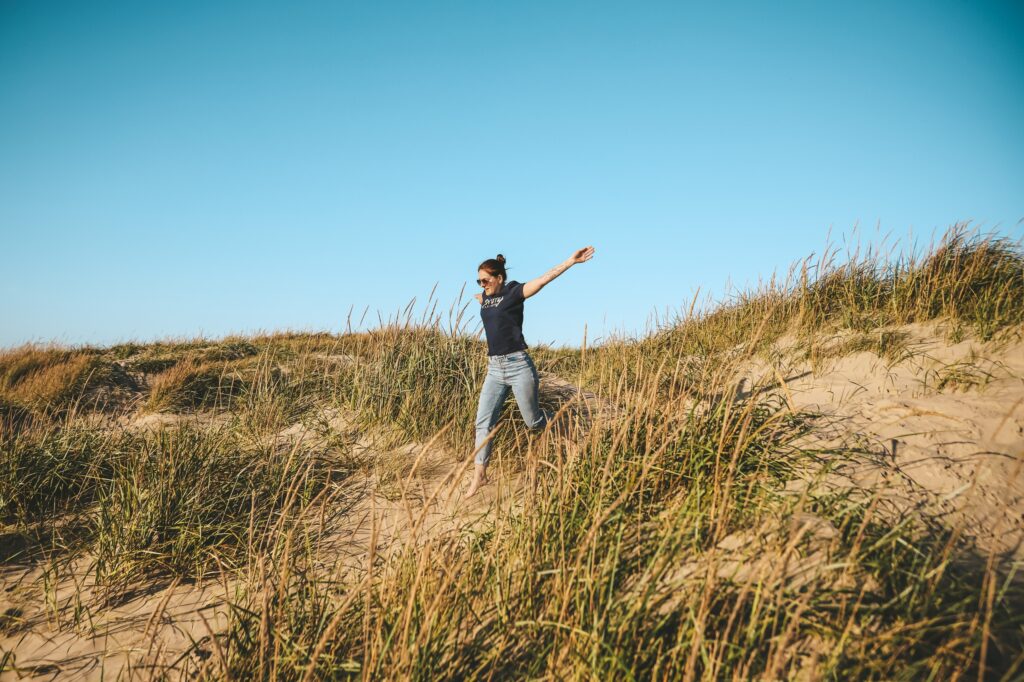
5. Great campsites and pitches in Denmark
Denmark is a wonderful country for a road trip where you can visit several campsites. I am happy to present four of the most beautiful campsites in Denmark below, which will inspire you thanks to their facilities and location.
Camping Lyngvig Strand
This campsite is located on the west coast of Denmark and offers a breathtaking view of the North Sea. Here you are surrounded by dunes and heathland and spend your holiday in a peaceful and natural environment. You can visit the Lyngvig lighthouse, which is located nearby, or take a stroll along the endless sandy beaches. The pitches are spacious and well equipped. The site is also a paradise for action fans, as you can try surfing, paddling and other outdoor activities.
Address: Camping Lyngvig Strand, Holmsland Klitvej 81, 6960 Hvide Sande, Denmark
Google Maps
Webseite: Camping Lyngvig Strand
Camp Møns Klint
Møns Klint is famous for its impressive chalk cliffs that drop steeply into the Baltic Sea. At this campsite, you have the opportunity to experience this sight up close. You can spend the night on one of the terraced pitches and start the day with a view of the sea and the cliffs. The place is ideal for a motorhome trip with the whole family. Take the opportunity to explore the hiking trails along the cliffs. Or how about a visit to the nearby geocentre to learn more about the geology of the region?
Address: Camp Møns Klint, Klintevej 544, 4791 Borre, Denmark
Google Maps
Webseite: Camp Møns Klint
Daler Camping
Nestled in the picturesque landscape of Jutland, a visit to Daler Camping provides a charming backdrop for a relaxing camping holiday. The site is located near the Limfjord and is surrounded by green forests. You can enjoy the peaceful atmosphere by the water, go hiking or go on a canoe trip. The pitches are spacious and equipped with everything your camping heart desires. The site even has its own sauna and swimming pool, so you can relax and unwind.
Address: Daler Camping, Hvidstrengvej 4, 6280 Højer, Denmark
Google Maps
Website: Daler Camping
Camping Absalon
If you want to be close to Copenhagen and still feel like you’re camping in the middle of nature, Camping Absalon is an excellent choice. This cosy site offers spacious pitches and is surrounded by meadows and heaths. Its proximity to the capital allows you to explore the sights of Copenhagen and be back at your motorhome in no time after a sightseeing tour. With modern facilities, a playground for children and friendly staff, this campsite is an ideal solution for a combination of family holiday and city break.
Address: Camping Absalon, Korsdalsvej 132, 2610 Rødovre, Denmark
Google Maps
Webseite: Camping Absalon
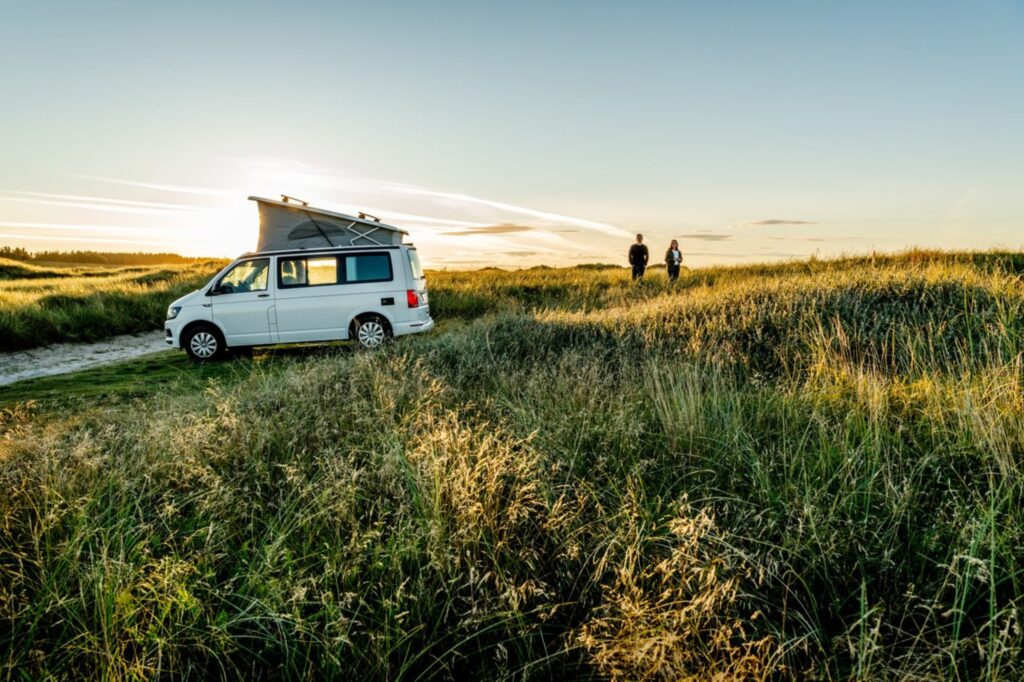
Did you know?
You can find more great campsites on the Danish North Sea and exciting excursion tips in the area in this article.
6. Beautiful beaches in Denmark
If you dream of breathtaking beaches, then Denmark is the perfect holiday destination for you. No matter where you are travelling, the nearest beach is never far away. Denmark is sure to impress you with its unrivalled sandy beaches and diverse leisure activities. Pack your swimsuit and sun cream in your rucksack and immerse yourself in the magical Danish beach culture. I have put together four of the most beautiful beaches for you.
Rømø Strand
This beach is really something special. Not only is it one of the widest beaches in Europe, you can even drive along the beach in a motorhome. If you are careful not to drive into the areas with deep sand, an unforgettable beach experience awaits you here. The endless sand dunes and the crashing sea provide a breathtaking backdrop. The beach is also known for its kitesurfing opportunities, so hire a board and try something new.
Skagen Strand
At the northernmost point of Denmark lies Skagen with its charming yellow cottages and beautiful beach. The Baltic Sea and the North Sea meet here, creating an impressive natural spectacle. Bear in mind that you are not allowed to swim everywhere here due to the strong currents. However, suitable bathing spots are clearly signposted. Incidentally, you can even take part in a guided seal safari in Skagen.
Dueodde Strand – Bornholm
The island of Bornholm is home to the idyllic Dueodde beach, which is known for its fine, white sand and clear blue water. The dune landscape gives the place a magical atmosphere. Not only can you swim and sunbathe here, you can also hire bikes and explore the surrounding area. Bornholm is also great for travelling by motorhome.
Marielyst Strand
This beach on the island of Falster is known for its particularly child-friendly bathing experience and gently sloping coastline. It is a great place for families. The beach stretches for 20 kilometres and offers plenty of space to relax, paddle, swim and play. There are also a variety of activities and restaurants nearby to round off your day at the beach.

Good to know
If you fancy travelling to the Danish island of Bornholm by motorhome, you will find 7 beautiful campsites and great excursion tips for your road trip in this article.
7. Is wild camping allowed in Denmark?
There are a few important things to bear in mind when wild camping in Denmark. In principle, wild camping is not permitted unless you have explicit permission from the landowner. The right of access to nature in Denmark is called “Allemansrätt” (everyone’s right), which allows you to enter public areas such as forests and beaches, but camping without permission is not normally permitted.
If you still want to experience the freedom of camping in nature, there are some campsites that offer special areas for “wild camping”, where you can camp in a spacious, limited area. These sites usually offer facilities such as toilets and water points to ensure that the environment is protected.
Of course, you are allowed to park your motorhome in car parks and rest areas to rest. In most cases, you can recognise whether you are allowed to stay overnight by the corresponding signs. However, camping equipment should always remain stowed in the motorhome.
Camping is strictly prohibited in nature reserves and national parks in order to preserve the fragile environment. It is important to follow the local rules so as not to risk any penalties.

Good to know
In this article about wild camping, you can find out in detail what the legal situation is like in Scandinavia and the rest of Europe.
8. What you need to watch out for on Denmark’s roads?
- Exploring Denmark on a road trip also means following a few important tips to make your journey safe and enjoyable. In Denmark, as in most European countries, driving on the right is mandatory. You can find some more important information about Danish road traffic below.
- In Denmark, you can easily rent a motorhome with a driving licence from Switzerland or the EU and drive off immediately.
- The speed limits are generally 50 km/h in urban areas and 80 km/h outside urban areas. On the motorway, the speed limit is 130 km/h for cars and motorhomes up to 3.5 tonnes.
- The road conditions in Denmark are excellent. Most roads are tarred. There are occasional country lanes leading to places of interest and excursion destinations, which are also in good condition.
- You must always drive with your dipped headlights switched on, regardless of the light conditions. Make sure your headlights are correctly adjusted so as not to dazzle other drivers.
- Denmark has many rural areas, so be prepared for the possibility of an animal crossing the road, especially in the early morning and evening hours.
- There are no motorway tolls in Denmark, but some bridges and tunnels have tolls. Find out in advance about possible charges and payment methods along your route.
- The general emergency number in Denmark is 112, which is used for emergencies such as accidents, medical emergencies, fire and criminal activity. If you need urgent help, dial 112 and your call will be forwarded to the appropriate emergency services.
- 114 is the telephone number for the Danish police. You can dial this number to report non-urgent police matters or to obtain information.
- 1813 is the hotline for medical assistance and counselling. It can be used for non-life-threatening medical problems to obtain information or medical advice.
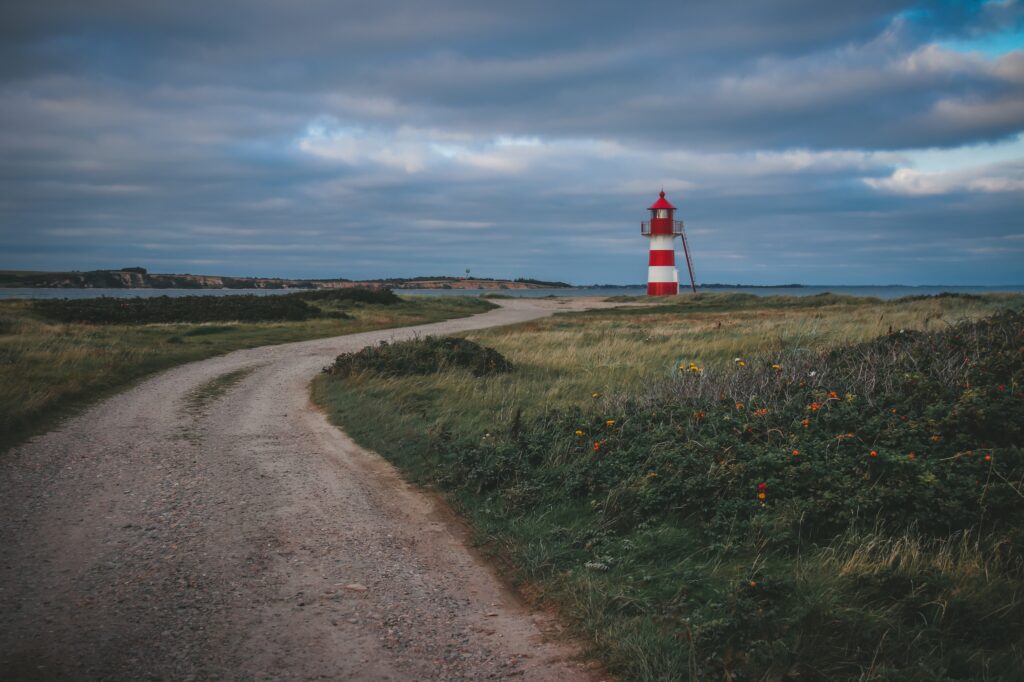
9. Camping with dog in Denmark
The advantage of motorhome travel is that you can take your four-legged friend with you on holiday pretty easily. However, there are a few important things to bear in mind to ensure that both you and your four-legged friend have a pleasant and trouble-free trip to Denmark.
When entering the country, the identification of your pet comes first. A microchip ensures that your pet is clearly identifiable. An EU pet passport in which a vet confirms the rabies vaccination is also essential. The last vaccination should not be older than the identification of the animal.
In Denmark, 13 dog breeds are categorised as dangerous. Unfortunately, these are not allowed on holiday. These are: Pitbull Terrier, Tosa Inu, American Staffordshire Terrier, Fila Brasileiro, Dogo Argentino, American Bulldog, Boerboel, Kangal, Tornjak, Sarplaninac and Central Asian, Caucasian and South Russian Ovtcharka. The ban also applies to crossbreeds of the dog breeds in question.
You can walk your dog off the lead in special dog parks and forests. However, in other woodland areas and in the wilderness in general, your dog should be kept on a lead. On beaches with the “Blue Flag”, dogs are allowed to swim within 200 metres of the flag. To protect breeding birds, dogs must be kept on a lead between April and September.
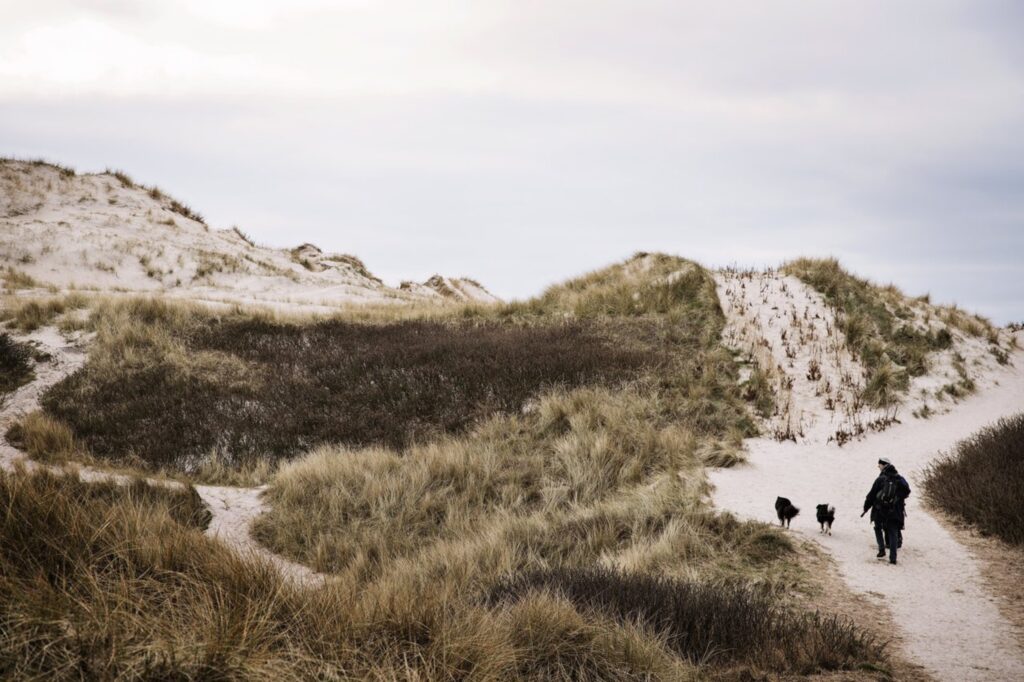
Good to know
Incidentally, a tip for carefree travelling with a dog is special dog liability insurance. This covers any damage your dog may cause. Make sure that the insurance is also valid abroad.
10. Danish crash course
Are you ready for a quick run through the Danish language? Our Danish crash course is a great way to get to grips with the language on your Danish road trip. A few basics are enough to put a smile on the faces of the locals. And you can also ask for the nearest restaurant, petrol station or pharmacy.
| Hello! | Hej! | Campsite | campingplads |
| Good day! | Goddag! | Motorway | motorvej |
| Bye! | Vi ses! | Petrol station / garage | tankstation / værksted |
| Thank you! | Velbekom! | Grocery store | supermarked |
| Thanks! | Tak! | Restaurant | restaurant |
| Yes / No / Maybe | Ja / Nej / Måske | Vegetarian / Vegan | vegetar / vegansk |
| Excuse me | Undskyld, … | Toilet | toilet |
| How much does … cost? | Hvad koster … ? | Where is the nearest …? | Hvor er den/det nærmeste …? |
| How do I get to …? | Hvordan kommer jeg til …? | Pharmacy | farmaci |
| Parking space | parkeringsplads | Doctor / Hospital | læge / hospital |
| Switzerland / Austria / Germany | Schweiz / Østrig / Tyskland | Water | vand |
| Cash machine | pengeautomat | I do not speak Danish. | Jeg taler ikke dansk. |
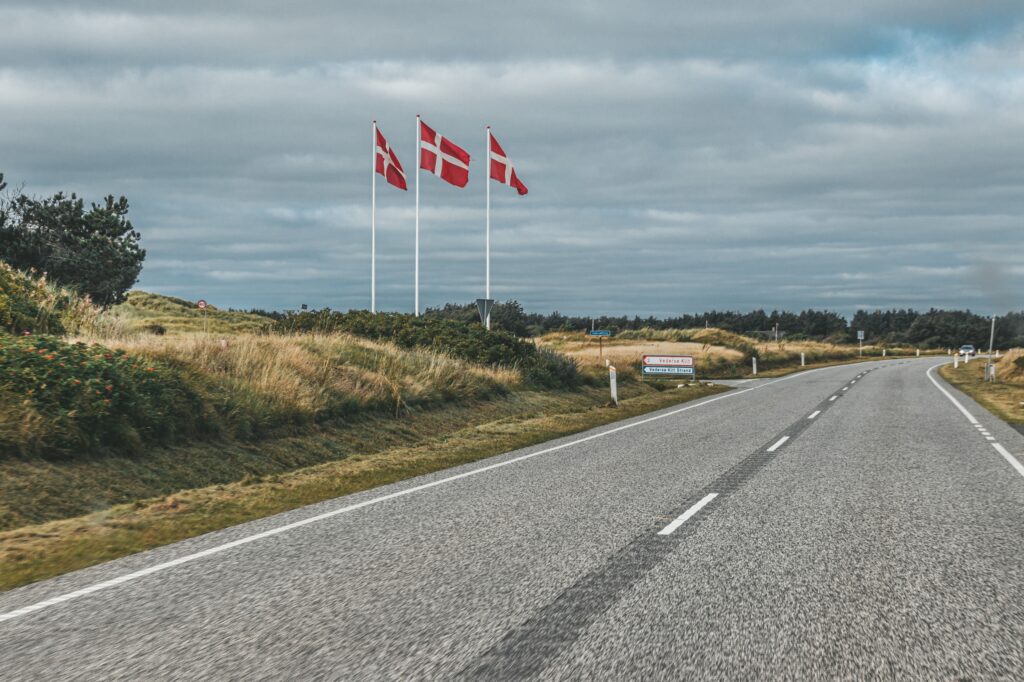
11. The Denmark Camping FAQ
How much does a campsite in Denmark cost?
Very simple pitches on open-air campsites sometimes cost just 5 euros. Depending on the facilities and season, the cost on the campsites is between 10 and 40 euros. For spacious pitches with direct access to the beach, the costs can be somewhat higher.
Is there a money-saving tip for camping in Denmark?
Yes, my best money-saving tip is to travel in the low season. Not only will you have plenty of space at the campsites, but you can often save up to 50% on the cost of pitches.
Can I make a campfire in Denmark?
Campfires are generally prohibited in forests, as well as in most nature reserves and national parks. Always pay attention to the relevant signs. Otherwise, a safe option is to use public fire and barbecue sites. Remember to always extinguish the fire with plenty of water before leaving the fire pit. Also pay attention to the wind conditions so that flying sparks cannot spread to the surrounding area.
Are there enough petrol stations in Denmark and when are they open?
Yes, there are a sufficient number of petrol stations in Denmark, which are generally well distributed and easily accessible. Most of the larger towns, motorways and main roads have petrol stations. There are no large uninhabited areas like in the northern countries of Scandinavia, so you don’t have to travel huge distances to the next town.
Automatic petrol pumps are widespread in Denmark and offer a convenient way to get fuel outside the regular opening hours of petrol stations. You will need a credit card for this, but sometimes you can also pay with a standard EC card.
How expensive is the cost of living in Denmark?
Going to a restaurant can be more expensive in tourist areas than in the countryside. A meal usually costs between 15 and 30 euros. Prices for food, cosmetics, petrol, cleaning products etc. are about the same in Denmark as in Sweden.
Are winter tyres compulsory in Denmark?
In Denmark, unlike many other European countries, there is no general winter tyre requirement. Nevertheless, winter tyres are recommended in the cold season to make your road trip as safe as possible.
Is Denmark an LGBTQ+ friendly destination?
Denmark is at the top of the list of the world’s most LGBTQ+-friendly destinations, so you can experience a completely relaxed trip in an open and tolerant atmosphere. LGBTQ+ events take place in the cities all year round and you will also find many trendy bars and clubs.
What is the currency in Denmark and can I pay with my credit card?
The euro is not used for payment in Denmark. The Danish krone has been the national currency for around 150 years.
Yes, you can pay with credit cards almost everywhere in Denmark. Credit cards are accepted in shops, restaurants, hotels, petrol stations and most other establishments. The most common credit cards such as Visa, Mastercard and American Express are generally accepted without any problems. In remote or rural areas, some smaller shops or restaurants may prefer to accept cash.
